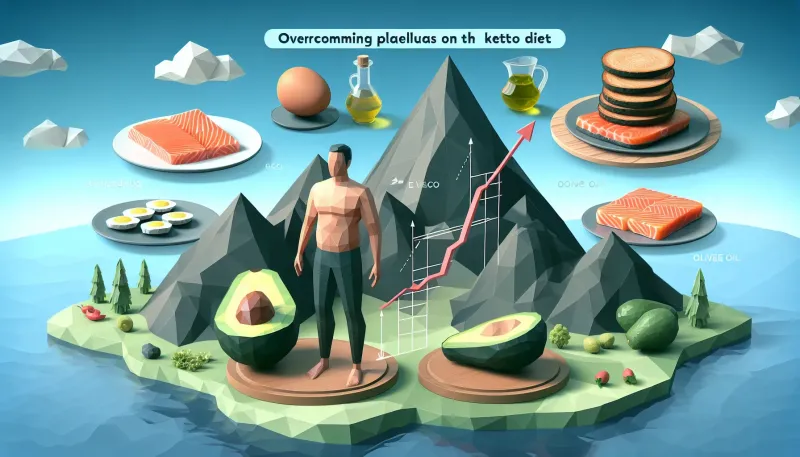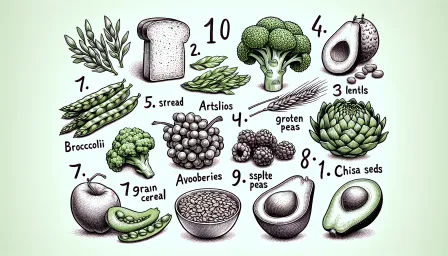Effective Strategies for Plateau Busting on the Keto Diet

Discover expert strategies to break through a weight loss plateau on the keto diet, with practical tips and solutions to help you succeed.
The ketogenic diet has gained widespread popularity for its effectiveness in promoting weight loss and overall health. However, even the most dedicated keto dieter can sometimes hit a plateau where weight loss stalls. This article delves into effective strategies for plateau busting on the keto diet, helping you overcome this common challenge and continue on your path to achieving your goals.
Understanding the Keto Plateau
Before diving into strategies to break through a keto plateau, it’s essential to understand what it entails. A plateau occurs when your body adapts to your current diet and exercise regimen, causing weight loss to halt. This can be frustrating, but it's a natural part of the weight loss journey.
Causes of a Keto Plateau
Several factors can contribute to a plateau on the keto diet:
- Metabolic Adaptation: Over time, your body becomes more efficient at using fat as an energy source, which can reduce the rate of weight loss.
- Caloric Intake: Consuming too many calories, even from keto-friendly foods, can prevent further weight loss.
- Hormonal Fluctuations: Hormones play a significant role in weight regulation, and imbalances can affect your progress.
- Lack of Variety: Sticking to the same foods and exercise routines can lead to metabolic and psychological burnout.
Effective Strategies for Plateau Busting
Now that we have identified the potential causes of a plateau, let’s explore strategies to overcome it:
1. Reassess Your Macros
One of the foundations of the keto diet is maintaining the right macronutrient ratios. As you lose weight, your nutritional needs change. Use a keto calculator to reassess your ideal intake of fats, proteins, and carbs. Adjusting your macros can help revitalize your metabolism.
2. Track Your Caloric Intake
While the main focus of keto is on macronutrients, caloric intake still matters. Overeating, even healthy fats, can lead to a calorie surplus and stall weight loss. Use a food tracking app to monitor your daily intake and ensure you are in a caloric deficit.
3. Incorporate Intermittent Fasting
Intermittent fasting (IF) involves alternating between periods of eating and fasting. This practice can reinforce ketosis and enhance fat burning. Popular methods include the 16:8 (16 hours fasting, 8 hours eating) and 5:2 (eating normally for 5 days, significantly reducing calories for 2 days) schedules.
4. Mix Up Your Exercise Routine
Exercise is a critical component of weight loss, but your body can adapt to repetitive workouts. Diversify your exercise regimen by incorporating high-intensity interval training (HIIT), weightlifting, and aerobic exercises. This variety can shock your muscles and boost your metabolism.
5. Manage Stress and Sleep
Stress and lack of sleep can impact your hormonal balance, particularly cortisol levels, which can inhibit weight loss. Practice stress-reducing activities such as meditation, yoga, or deep breathing exercises. Aim for 7-9 hours of quality sleep each night to support overall health and metabolic function.
6. Hydrate Adequately
Dehydration can mislead your body into thinking it's hungry, leading to overeating. Drinking enough water is crucial for weight loss and overall health. Aim for at least 8-10 glasses of water daily and consider electrolytes to maintain balance, especially on a low-carb diet.
7. Reflect on Hidden Carbs
Hidden carbs in processed foods, sauces, and even low-carb products can add up and kick you out of ketosis. Read labels carefully and be mindful of your carb intake. Opt for whole, unprocessed foods to minimize hidden carbs.
Advanced Techniques
For those who need more advanced strategies, consider the following:
8. Carbohydrate Cycling
Carb cycling involves alternating between high and low-carb days. This technique can reset your metabolism and prevent adaptation. Implement this under the guidance of a nutritionist to ensure it aligns with your goals.
9. Fat Fasting
Fat fasting is a short-term, high-fat, low-protein, and low-carb diet that can help jumpstart ketosis. Typically lasting for 2-3 days, this method should be used sparingly and under medical supervision to avoid nutritional imbalances.
10. Exogenous Ketones
Exogenous ketones are supplements that can help boost ketosis levels. While not a substitute for proper dietary practices, they can provide an occasional boost during a plateau. Consult with a healthcare professional before using these supplements.
Conclusion
Breaking through a plateau on the keto diet requires a multifaceted approach that involves reassessing your macros, tracking your caloric intake, incorporating intermittent fasting, diversifying your exercise routine, managing stress and sleep, hydrating adequately, and being mindful of hidden carbs. For more advanced strategies, you can explore carbohydrate cycling, fat fasting, and exogenous ketones under professional guidance. The key is patience and persistence. By implementing these strategies, you can overcome the plateau and continue your journey towards your weight loss and health goals.



























